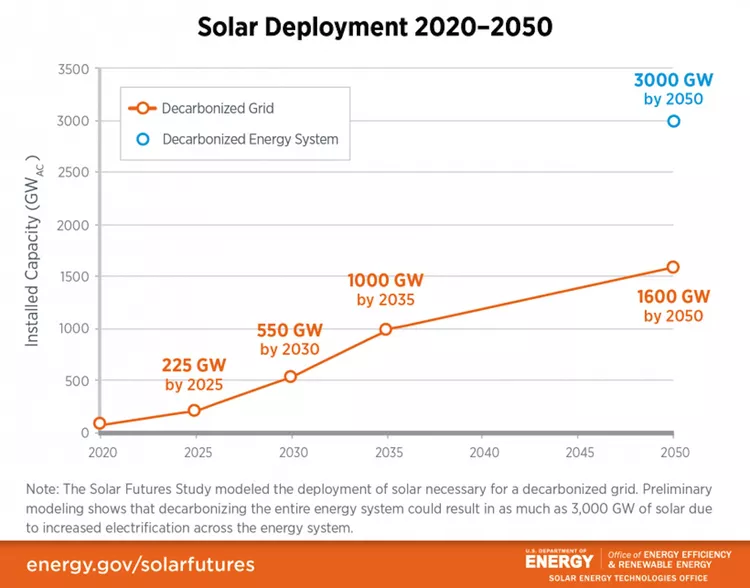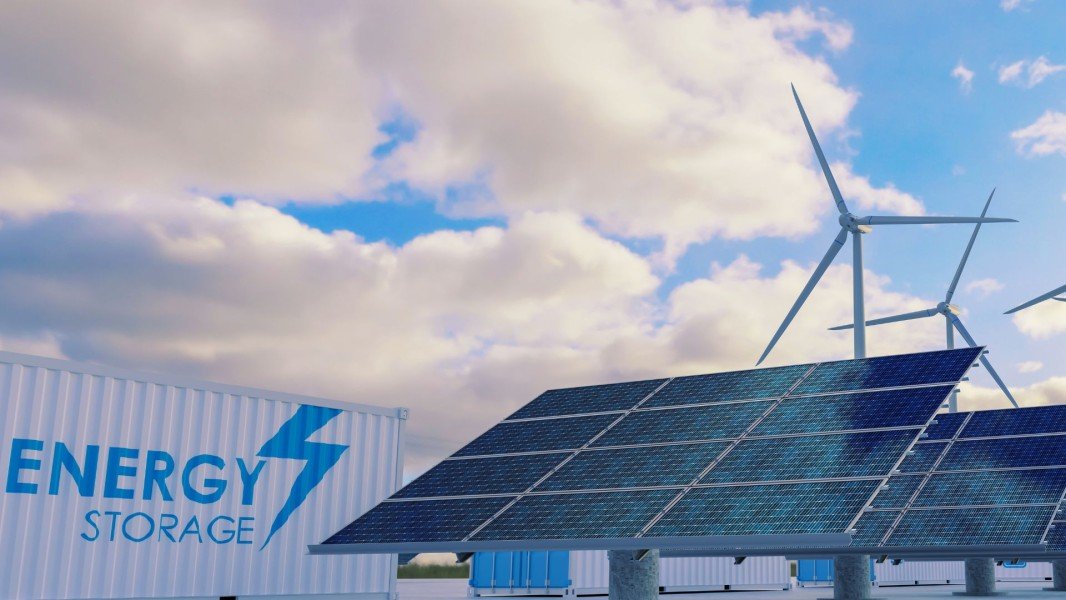A study says solar farms could produce enough electricity to power U.S. homes.
This article is reproduced from the article of the author “Eduardo Garcia”

The U.S. could rely on solar energy to produce 40% of its electricity by 2035, an effort that would lead to a drastic reduction in carbon emissions, the Biden administration said in a new energy blueprint.
The Solar Futures Study released Wednesday by the Department of Energy (DOE) lays out the steps that could allow the federal government to decarbonize the electric grid, which accounts for about 25% of the country’s greenhouse gas emissions.
For that to happen, the U.S. will need to boost solar generation from around 3% of the country’s electricity supply to 40% in less than 15 years.
That will be a colossal task. Power companies will need to add an average of 30 gigawatts (GW) of solar energy per year over the next four years, twice as much as the solar capacity built in 2020, which was a record year. From 2025 to 2030, the country will need to once again double solar capacity additions to 60GW per year. These high rates will continue into the 2030s and beyond, the study said.
On top of that, power companies will need to overhaul the transmission system to better distribute solar power and built large battery storage facilities to ensure that renewable power is available throughout the day.

According to the blueprint, the U.S. could potentially boost solar power generation from 76 GW at present to 550 GW by 2030 and 1,000 GW by 2035. The DOE envisions further increasing solar power generation to 1,600 GW by 2050.
“The study illuminates the fact that solar, our cheapest and fastest-growing source of clean energy, could produce enough electricity to power all of the homes in the U.S. by 2035 and employ as many as 1.5 million people in the process,” said Secretary of Energy Jennifer Granholm.
To achieve this goal, Democrats will need to harness their razor-thin majorities in both chambers of Congress to approve legislation that will channel hundreds of billions of dollars to the renewable energy sector—including the infrastructure bill and the budget plan.
Industry groups welcomed the publication of the Solar Futures Study but urged lawmakers to pass bold policies to promote renewable energy.
“The report affirms that accelerating the clean energy transition will lead to both climate protection and greater economic prosperity, creating good-paying jobs across America. A key step to achieving this critical objective is the reform of the nation’s tax code now pending in Congress,” the president and CEO of the American Council on Renewable Energy, Gregory Wetstone, said in a statement.
Shortly before the report was released, hundreds of companies involved in the solar energy industry sent a letter to Congress urging lawmakers to approve tax incentives to spur solar deployment.
Steady Prices, New Jobs
According to the study, electricity prices will not increase “because decarbonization and electrification costs are fully offset by savings from technological improvements and enhanced demand flexibility.”
In addition, the solar industry will help create jobs because it will need to employ between 500,000 and 1.5 million people by 2035, up from around 230,000 at present, the report says.
This huge deployment of solar panels will need about 0.5% of the contiguous surface area of the U.S.—they will mostly be placed in so-called “disturbed lands” but also on rooftops and “on water bodies, in farming or grazing areas, and in ways that enhance pollinator habitats.”

Although ramping up solar energy will cost $562 billion by 2050, by following this blueprint, the U.S. will be able to reduce emissions from the electricity sector by 95% in 2035 and 100% in 2050.
“Avoided climate damages and improved air quality more than offset those additional costs, resulting in net savings of $1.7 trillion,” the report says.
As well as promoting solar and wind power generation to tackle climate change, President Biden last month issued an executive order under which half of all new vehicles sold in 2030 will have to be zero-emission vehicles.






